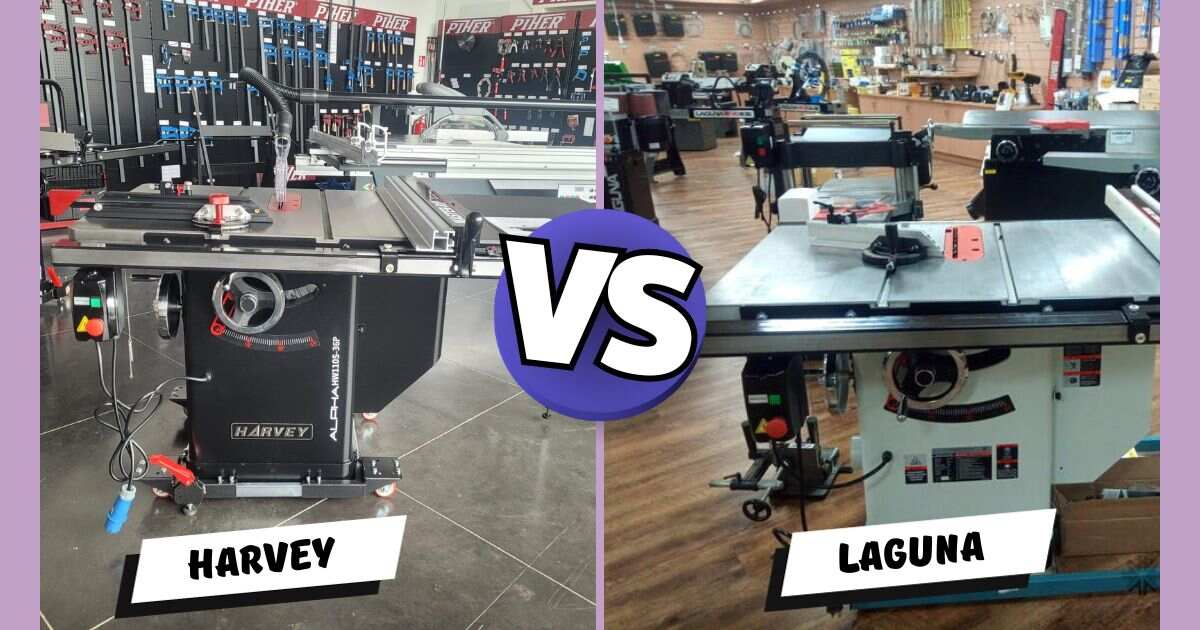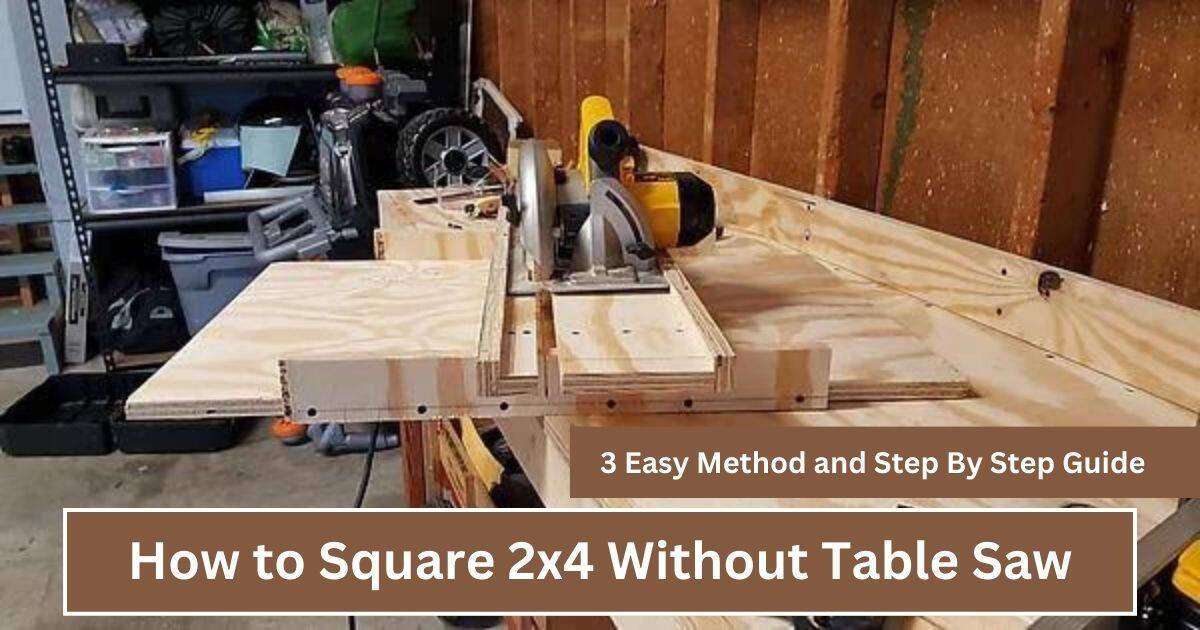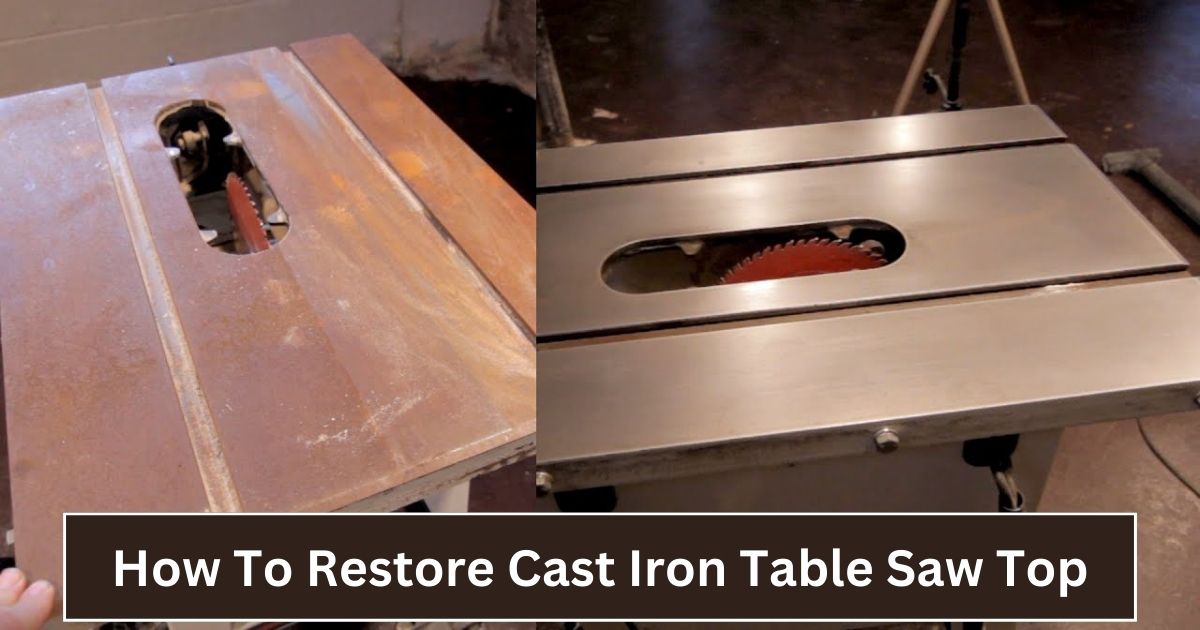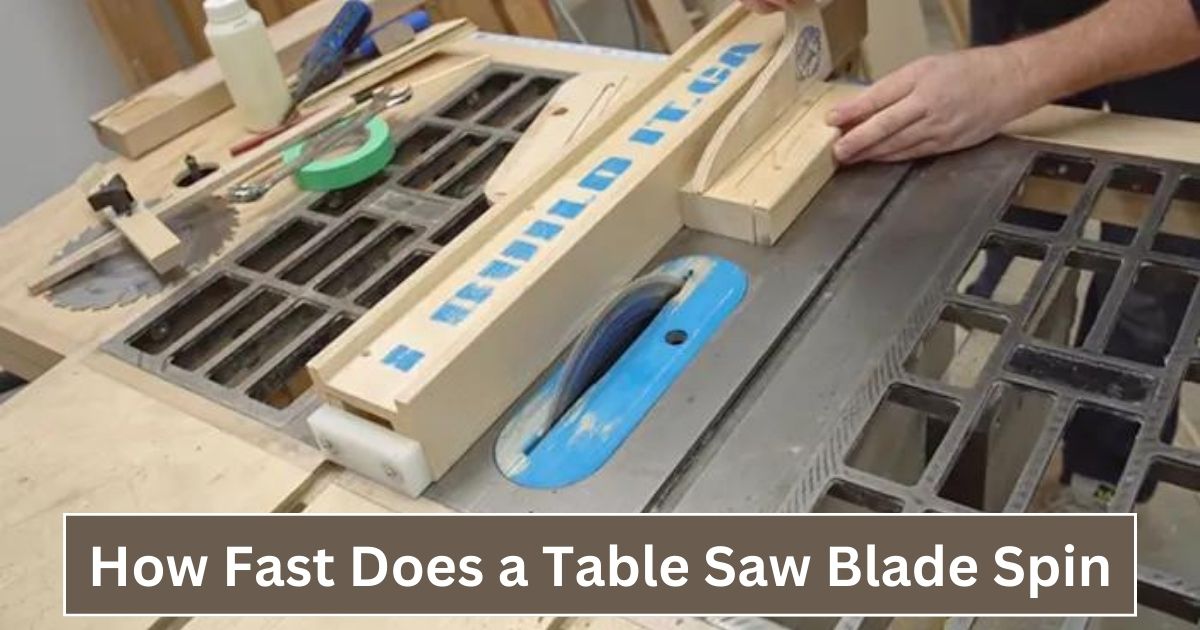What is rip capacity on a table saw? The rip capacity of a table saw is a crucial factor to consider when cutting wood. It determines how wide a piece of wood you can cut with the saw. The price of a table saw often depends on its rip capacity.
So, it’s important to figure out the right amount of rip capacity you need for your workshop, especially if your work involves making tables.
Rip capacity refers to the space between the edge of the saw’s fence and the edge of the table saw when the cutting blade is fully extended.
If you want to increase the width of the wood you can rip, you can achieve this by buying a Torsion box router table, making adjustments to the existing fence, or extending one side of your workbench with a table that has greater depth capacity.
In this article, we’ll discuss how to enhance your rip capacity, determine the necessary rip capacity for making straight cuts, learn more about table saw rip capacities, and discover methods to get additional rip capacity.
What Does Rip Capacity on a Table Saw Mean:
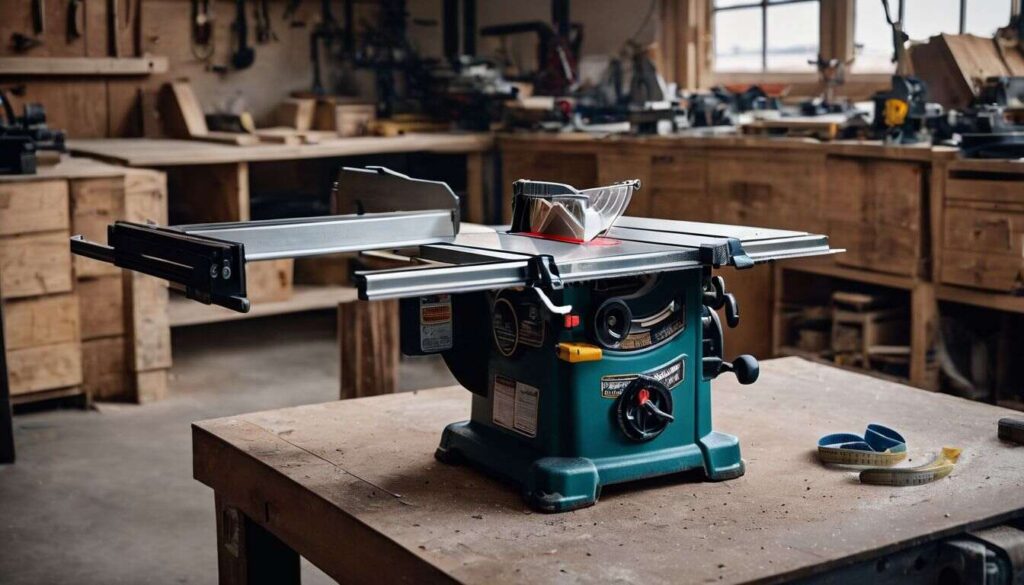
Rip capacity is essentially defined as the distance between the edge of the table saw’s blade and the fence.
This is the “marketing” way of putting it, but in reality, a table saw’s rip capacity can be nearly limitless if you use larger tables for supporting the materials and have extra individuals assisting you with the process of cutting
It’s important to remember that rip capacity, as mentioned earlier, relies on the table saw’s fence and is more of a marketing term than anything else.
You can always take off the fence and effectively have a much larger rip capacity, but without the fence, it becomes challenging to maintain a straight line unless you create a custom guide.
To explain this further, consider a situation where your table saw has a rip capacity of 20 inches, and you need to cut a 4′ x 8′ plywood sheet in half (which is right at 24″).
You can remove the fence and make the cut without it. However, you’d need to mark a cutting line on the plywood and follow that line precisely or construct a custom fence for the cut.
Why is Rip Capacity Important?
Now that we understand what rip capacity is, let’s explore why it holds such significance.
Prioritizing Safety:
Safety always comes first in woodworking. When your table saw’s rip capacity matches your project’s requirements, it ensures you can make precise cuts without compromising safety.
Trying to cut materials wider than your saw can handle may lead to kickback, where the wood forcefully moves back towards you, creating a serious hazard. This is a situation you should definitely steer clear of.
Enhancing Versatility and Efficiency:
Imagine you’re working on a project that involves cutting a wide sheet of plywood for a cabinet back. If your table saw has limited rip capacity, you might have to resort to alternative methods, which might be less precise, such as using a circular saw or a track saw.
This not only diminishes the precision of your work but also increases the time and effort required.
Having a table saw with a generous rip capacity allows you to efficiently tackle a broader range of projects with greater precision. It transforms into a versatile tool in your workshop, capable of handling various tasks, from ripping long boards to cutting sheet goods.
What Are the Typical Wood Cutting Widths for Compact Table Saws?
Your table saw or router table attachment’s rip capacity sets the limit for the width of the wood you can slice. These table saws come in a range of sizes, from highly mobile options to much larger ones with substantial rip capacities. Having a ripping capacity that’s larger than usual can help you efficiently finish your crucial projects.
Portable Table Saws – 28 Inches:
If you’re looking for an affordable option with entry-level rip-cutting capability, DeWalt table saws are a great choice. These mid-priced table saws pack plenty of power and perform exceptionally well.
With a rip capacity of 28 inches, you can cut a piece of wood up to 48 inches wide. This rip capacity suits the needs of the typical craftsman and their projects. It’s the most common rip capacity for smaller, entry-level table saws.
Contractor Table Saw – 30 Inches:
Many diligent contractors prefer a 30-inch rip capacity as it handles a wide range of cuts effectively. Using a contractor saw like the SawStop 36 Inch Contractor Table Saw is a reliable way to achieve this rip capacity consistently.
Professional Cabinet Table Saw – 50 Inches:
Unless you’re a professional woodworker, there’s rarely a need for such a high level of cutting capacity. The Cantek professional cabinet-style table saw offers the ability to handle heavy-duty tasks that demand a larger rip capacity. Cabinet saws are versatile table saws known for having the most substantial rip capacity.
What Does Determining Your Rip Capacity Needs:
There isn’t a specific rip capacity number that fits all situations.
Instead, a more relevant question to consider is the types of projects you’ll be primarily tackling, as this will significantly inform your rip capacity requirement.
For instance, if you work as a framing contractor, you’ll likely want a table saw with a maximum rip capacity of approximately 24 inches. This is because standard plywood or OSB sheets are 4 feet wide and 8 feet long. To cut one of these sheets in half lengthwise, you’d need a 24-inch rip capacity on your table saw.
Conversely, if you’re engaged in woodworking projects and aren’t dealing with large materials as in the previous example, a table saw with a rip capacity of 22 inches or less should suffice, particularly for smaller projects.
Is It Possible to Increase the Rip Capacity of Your Current Table Saw?
Absolutely, there are often ways to expand the rip capacity of your existing table saw:
Aftermarket Accessories:
Many manufacturers offer additional extensions like wings or fences that you can attach to your current table saw. These extensions can significantly boost your saw’s rip capacity and versatility.
Build Custom Extensions:
For a more cost-effective approach, you can create your own extensions using materials like plywood. It’s essential to ensure they’re level and securely fixed to maintain safety and accuracy.
Retrofitting:
Some experienced woodworkers have successfully modified their table saws by repositioning the fence rails to increase rip capacity. However, this can be a complex task and may demand advanced woodworking skills.
Before embarking on any modifications, it’s advisable to consult your table saw’s manual and consider seeking guidance from seasoned woodworkers or professionals to ensure safety and precision.
What Are The Differences Between Rip Capacity and Crosscut Capacity:
Rip capacity and crosscut capacity are both crucial measures for understanding a table saw’s abilities, but they pertain to distinct aspects of cutting:
Rip Capacity:
As we’ve discussed, rip capacity is the space between the saw blade and the fence on the right side of the blade. It decides the width of the material you can cut lengthwise or parallel to the wood’s grain.
Crosscut Capacity:
In contrast, crosscut capacity refers to the width of material you can cut perpendicular to the wood’s grain. This measurement is influenced by the size of the miter gauge or the gap between the blade and any crosscut sled or accessory you may use.
Safety Precautions for Working with a Table Saw Featuring a Generous Rip Capacity:

Safety is of utmost importance when operating a table saw with a high rip capacity. Here are some essential safety guidelines to keep in mind:
Always Use Safety Equipment:
This entails the use of safety eyewear, ear protection, and suitable attire. It’s also a good idea to consider wearing a dust mask or respirator to shield against dust and debris.
Keep Your Workspace Tidy:
Maintaining a tidy and orderly workspace minimizes the likelihood of accidents. Ensure there are no obstructions near the saw, and clear away wood scraps and tools that aren’t in use.
Utilize a Push Stick:
When making narrow cuts, employ a push stick to guide the wood through the blade. This keeps your hands safely away from the blade and helps prevent kickback.
Set the Blade Height Properly:
Adjust the blade height so that it’s just slightly higher than the thickness of the material you’re cutting. This minimizes the exposed blade and lowers the risk of accidents.
Use a Rip Fence:
When making long rip cuts, the rip fence is your ally. Make sure it’s correctly aligned and securely locked in place to maintain a straight cut.
Avoid Overloading the Saw:
Don’t push the Saw beyond its limits. If you’re working with large or heavy materials, seek assistance or provide additional support to prevent strain on the saw and reduce the risk of accidents.
Stay Focused:
Woodworking demands your full concentration. Steer clear of distractions, and don’t rush through a cut. Take your time to ensure both precision and safety.
Factors to Keep in Mind Regarding a Table Saw’s Rip Capacity:
Indeed, there are a few considerations to bear in mind:
Cut Quality:
The quality of your cuts on a table saw with a high rip capacity can be influenced by factors such as the blade’s quality, the saw’s power, and the stability of your setup. To maintain excellent cut quality, it’s important to invest in a good blade and ensure your saw is well-maintained.
Space Requirements:
A table saw with a generous rip capacity can occupy a substantial amount of space in your workshop. It’s essential to have sufficient room for both the saw and the materials you’ll be working with.
Portability:
Larger table saws with high rip capacities can be heavy and not easy to move around. If you require a saw that you can transport frequently, consider a portable model with a smaller rip capacity.
Budget:
It’s worth noting that table saws with larger rip capacities tend to be more costly. It’s crucial to align your budget with your requirements and the kind of projects you intend to undertake.
Advantages of Using a Sliding Table Saw for Rip Capacity:
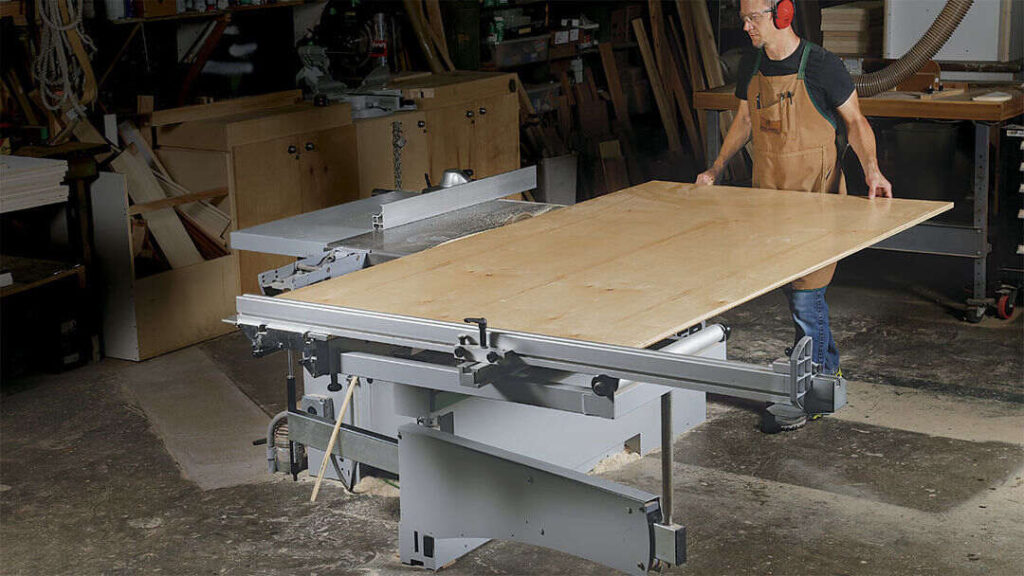
A sliding table saw is a type of table saw renowned for its impressive rip capacity and versatility. Here are the main advantages:
Generous Rip Capacity:
Sliding table saws feature an extended sliding table that enables cutting wider materials compared to conventional table saws. This is especially beneficial when dealing with large plywood sheets and other wide stock.
Accuracy and Safety:
The sliding table ensures precise and controlled cuts, reducing the risk of kickback or alignment issues often encountered with standard rip fences. This precision is essential for fine woodworking and cabinetry.
Crosscutting Capabilities:
Sliding table saws are equally proficient at making crosscuts, making them versatile for various woodworking tasks. The sliding table facilitates precise perpendicular cuts with ease.
Enhanced Efficiency:
Using a sliding table saw allows for longer, continuous cuts without the need to constantly reposition the workpiece. This streamlines the cutting process and improves efficiency.
It’s important to note that sliding table saws are typically larger, heavier, and pricier than standard table saws. As a result, they are better suited for professional woodworkers or dedicated hobbyists with the space and budget to accommodate such equipment.
Is it Possible to Utilize a Table Saw with Restricted Rip Capacity for Bigger Projects?
While it’s feasible to work on larger projects with a table saw having limited rip capacity, it does present specific difficulties:
Multiple Passes:
If your table saw’s rip capacity is too small for the material at hand, you might have to make several passes to reach the desired width. This process can be time-consuming and may result in less precise cuts.
Increased Risk:
Employing multiple passes or unconventional techniques for wider materials can heighten the risk of accidents and kickbacks. In such situations, it’s crucial to exercise extreme caution and implement proper safety precautions.
Accuracy Concerns:
Obtaining precise, straight cuts on larger materials using a limited rip capacity can be a challenge. You might need to consider acquiring additional tools like a straightedge guide or track saw to ensure accuracy.
Bottom Line: What is Rip Capacity on a Table Saw
The cost of these table saw models is primarily influenced by their rip capacity.
Here are some straightforward ways to increase your rip capacity:
- Purchasing a table extension for models that can accommodate one.
- Adjusting your fence.
- Building a table to elevate one side of your table saw’s rip capacity.
If you’re unsure about how much rip capacity you need, take some time to think about the specific purposes you have for the saw.
FAQs about What is Rip Capacity on a Table Saw
What is Table Saw Rip Capacity?
The rip capacity is the maximum distance between the edge of the table saw’s fence and the saw itself when the rip fence is fully extended. The size of the blade affects the overall rip capacity, with smaller and larger table saws offering varying capacities.
How Many Types of Table Saws Exist?
If you need a substantial rip capacity or a unique rip fence system, you might consider exploring larger options like hybrid or cabinet table saws. You can find several online guides to help you choose the right circular saw blade for your project. There are four primary types of table saws that are commonly used for cutting hardwood.
When Is a Higher Rip Capacity Necessary?
Entry-level table saws are not equipped to handle tasks that demand extensive rip capacity, and that’s understandable. For more extensive construction projects, the typical rip capacity is around 40 inches.
Keep in mind that greater rip capacities call for larger tables to accommodate larger woodworking projects. Having a larger rip capacity allows you to make better use of your table saw’s surface area and the available workspace.
Related Posts:

